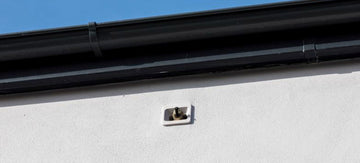Swifts are ‘the Sound of Summer’ but their numbers are plummeting. The annual UK Swift Awareness Week (3-11 July) has 60 local events across the UK aimed at inspiring more people to join the fight. See the full events list: Action for Swifts: SAW 2021 events.
UK SAW was set up in 2018 and is coordinated by Nick Brown of the Derbyshire Swift Conservation Project. Over 90 local groups from the south coast to the north of Scotland are working to keep these remarkable birds in our skies.
Nick said:
“The week gives swift enthusiasts the opportunity to run a wide range of events aimed at their local communities. Evening swift-watching walks are popular and well attended but in addition there are swift stalls, displays, zoom talks and more.
In the last ten years there has been an explosion in the number of active local
swift groups. Most are independent of the big conservation charities, instead set up by individuals who felt the need to do something to look after their local swifts, a bird which nationally have declined by 62% in the last 25 years.”

Edward Mayer, who runs the website Swift Conservation, and who promotes
swifts across Europe, said:
“Swifts bring our towns and cities alive with the sound of their spectacular “screaming parties” and their fantastic aerodynamic flights. We need to keep this unique experience alive and local groups across the country have shown how to do it! This iconic bird has declined drastically and it needs all the help it can get. So join your local group or set up a new one and start making a difference to our threatened biodiversity.”
Dick Newell, who set up Action for Swifts and who has been very successful
at installing boxes and getting the birds to use them, said:
“Swifts can be helped easily and cheaply by installing special nest boxes for them on existing properties. On new buildings it is simple and cheap to install internal swift ‘bricks’ or ‘blocks’ just below the eaves as the walls are built. We urgently need to encourage many more developers and builders to employ this effective way to help these remarkable birds.”
Contact:
Nick Brown: brownick824@gmail.com 01332 824608 / 07493 469508
National experts on Swifts:
Edward Mayer: Edward.mayer@swift-conservation.org 020 7794 2098 /
0794 1038 788
Dick Newell: dick.newell@gmail.com 01223 / 07968 428781

Further Information:
- Swifts spend most of their lives on the wing, never landing anywhere except at their nests in order to lay and incubate their eggs. They feed, sleep, drink and even mate on the wing.
- They feed exclusively on flying insects such as midges, mosquitoes, aphids and flies and also on airborne spiderlings. When feeding their young they can store as many as 1000 in their throat pouches before returning to the nest.
- They are essentially African birds, spending nine months of the year flying above that continent’s forests without ever landing. They migrate back to Europe in spring to breed but set off back to Africa only three months later.
- Swifts nest inside buildings, gaining access either through tiny holes below eaves or under tiles where mortar has fallen out. They leave very few signs of their presence and house owners can have a pair without even realising it.
- When old buildings are renovated, have new roofs, soffits or gutters fitted, the access holes to the swifts’ nests are (usually accidentally) blocked up. Loss of nest sites is probably the main reason for the dramatic decline of these birds though the reduction in insects may also play a part.
- External nest boxes can be fitted and there are many different designs on the market.
- With new buildings, it is easy and cheap to install internal ‘swift bricks’
or ‘blocks’ which have little visual impact, work very well and require no
maintenance.
We believe that every new housing development should incorporate such
internal swift boxes to compensate for the thousands of nest sites which
are lost on existing buildings every year.

